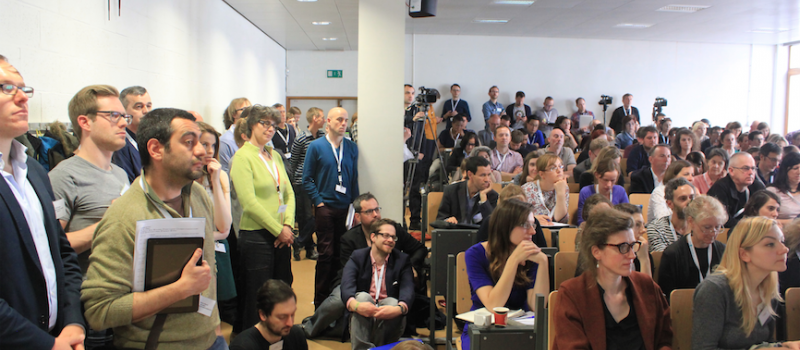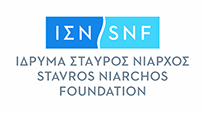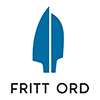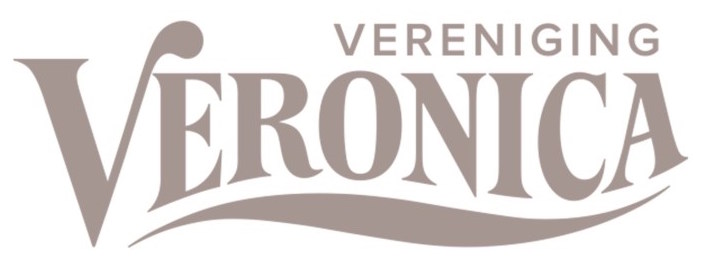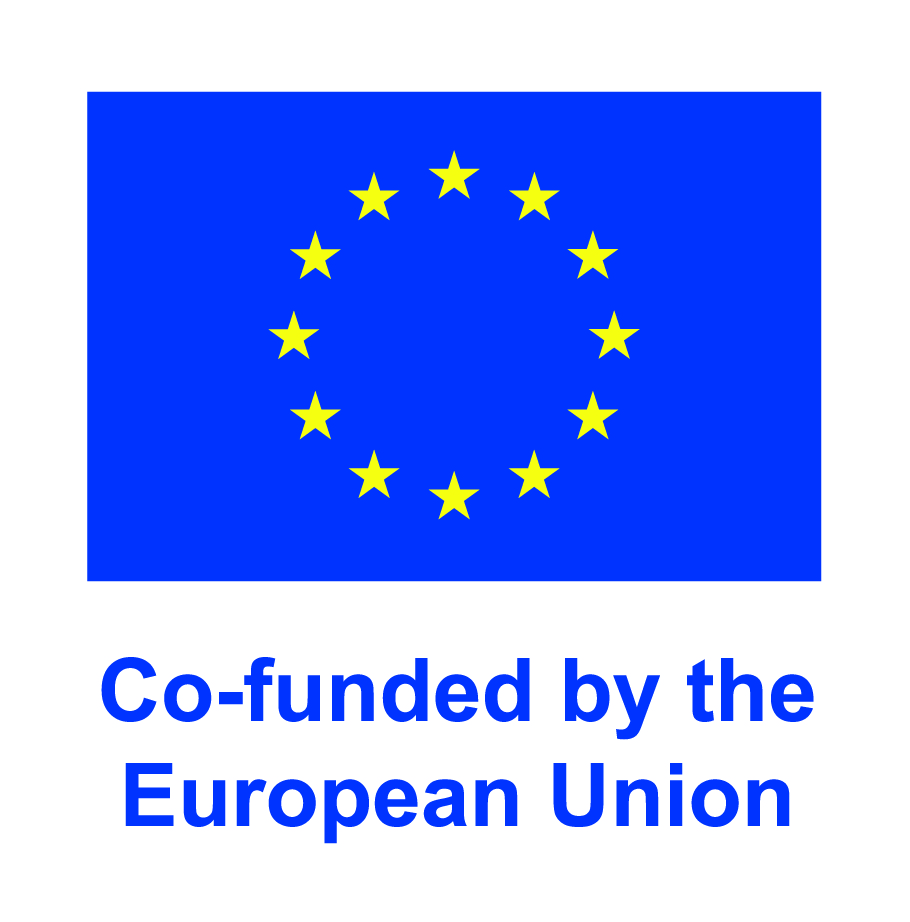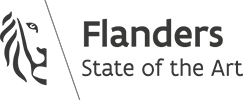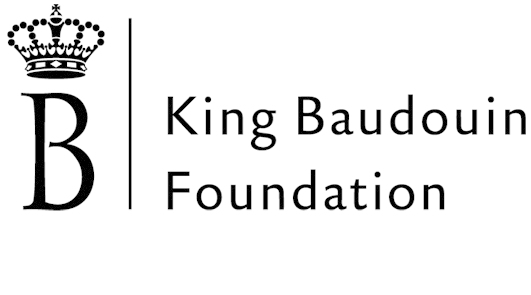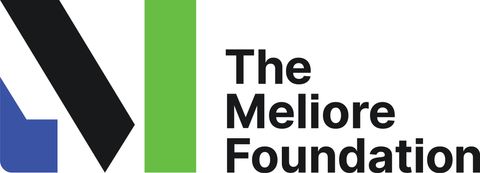
BRUSSELS – From the 8th until the 10th of May, the European capital of Brussels was transformed into an international meeting point for data coders and journalists, investigative or otherwise. The reason: the Dataharvest European Investigative Journalism Conference 2015.
The annual conference organised by Journalismfund.eu, up to its fifth edition this year, took place from the 8th until the 10th of May and brought together people from over thirty countries. Like last year, a pre-Dataharvest Hack Day was on the 7th of May held for interested coders and hackers, who prepared datasets for journalists to use during the conference.
With a fair amount of attendees from Belgium (52 attendees), Germany (31) and the Netherlands (30), over the Scandinavians such as Denmark (16) up to Russia (4), the USA (4) and even Nepal (3), the event proved to have a high turnaround. During these three days 75 speakers very enthusiastically shared their projects, experiences and knowledge to just under 300 participants.
Why cross-border journalism matters
After welcome speeches by Journalismfund.eu’s Brigitte Alfter and Ides Debruyne, ICIJ deputy director Marina Walker kicked off the conference with her keynote Why Cross-Border Journalism Matters. So why does it? “Because we need to write stories that have long tales and global impact”, says Walker. Working together in a cross-border journalism team amplifies and intensifies information gathering, analysis and dissemination.
ICIJ’s SwissLeaks project is a case in point. 175 reporters from 56 countries and 65 news platforms wrote 400 stories about the Swiss banking deals, in 15 different languages. The world is becoming ever more globalised, information is crossing borders and journalists must move in the same direction. “When a story is too big to work it out on your own, the lone wolf – the traditional type of journalist – needs to contact others, something that goes against their instinct.”
Walker’s message became the keynote of the whole conference. The lone wolf versus the team player – two types of journalists (and journalism) with both their own advantages and disadvantages. The increasing globalisation naturally requires a more and more globalised type of journalism: cross-border journalism. Following this reasoning, several general sessions on were scheduled on how to do cross-border journalism. From Cross-Border Journalism, step by step to The particular challenges of coordinating a cross-border team.
Even more intriguing were the particular cases where cross-border journalism was demonstrated as an efficient, powerful and dynamic tool to reveal transnational stories. On Saturday Mar Cabra, Kristof Clerix, Minna Knus-Galan and Katrin McGauran took us behind the scenes of LuxLeaks in How to unveil tax havens in Europe.
Watchdogs of the system
In addition to the SwissLeaks and LuxLeaks projects, a second major theme that was dealt with during the Dataharvest was anti-corruption. Whether they are a lone wolf or a team player, every journalist has the task to be a watchdog of the system. That’s what impressive investigative teams demonstrated. In Kremlin Money Roman Anin (Russia) and Stephen Grey (UK) explained how they discovered the money trail from the taxpayer to Putin’s friends. By combining multiple strategies of data journalism and field research, they set up a cross-border team that unveiled several suspicious money flows inside Russia.
On a smaller scale, but equally impressive, was the corruption unveiled by Attila Bátorfy (Hungary) in The Political economy of the Hungarian Media and Advertising Industry under the Second Orbán Administration. The investigation is a great example of how data analysis converges with story tooling and visualisation techniques. Another great example is Crina Boros’ (Romania) investigation of cross-border wobbing with Irish colleague Caelainn Barr in their Journalismfund.eu-supported project The Gold Trail.
Even though information is getting ever more globalised, so is corruption. That is why Transparency International’s Alison Coleman introduced a new database in the session Keeping track of news about corruption. The ambitious database aims to gather all EU articles concerning corruption. It has a search engine that is able to select all relevant articles – based on programmed keywords – out of the most important media in all the 28 member states in their native languages and in several sectors. There are still several challenges to overcome in order to optimise the system, but it is a promising example of a pan-European cooperation against corruption.
Wobbing the EU
Keeping an eye on transparency in general and of the EU in particular is one of the major concerns in the struggle against corruption. We had to wait until Sunday for hands-on information about wobbing on the most important institutions of the EU, such as the Commission and the Council. Brigitte Alfter shared her experiences regarding wobbing the Commission, providing us with very useful and specific tips and tricks. Staffan Dahllöf shared did the same for wobbing the Council. Anticipating the difficulties regarding such wobbing procedures, Fergal O’Regan from the EU ombudsman office shed light on how to file a well-crafted complaint with the EU Ombudslady, a necessary enrichment of the EU wobbing system.
Exploring datasets
Where to find databases concerning the EU was explained by Norbert Hohn and Daniel Freund. They respectively explored the EU Open Data Portal and the EU Integrity Watch, two open source databases that, though not being able to prevent corruption to arise, made it simpler for journalists to discover anomalies. This was illustrated by Adriana Homolova (Netherlands) in Europe’s Big Uncovered Follow-the-money Story and by Klaus Jensen (Denmark) in Tracking the Problems of the European Labour Market. Both illustrated the importance of organising a cross-border team to increase the EU pressure and to unveil the complete story of problems crossing individual countries’ borders. Among the most impressive of all EU-related revelations was Harald Schumanns’s documentary Macht Ohne Kontrolle (Power Without control), fully shown on Friday evening and fully explained Saturday morning.
Sources and security
Still, none of the above-mentioned investigations would have been possible without decent sources. That is why a significant part of the Dataharvest/EIJC discussed how to deal with whistleblowers (e.g. the session The ECtHR standards on the protection of whistleblowers) and brought up (the threats against) freedom of expression.
In addition to human sources, the increase of data driven journalism and digitalization, a high-impact evolution of journalism with advantages and disadvantages, was a major theme as well. Both sides of the medal were discussed and explored during these three days. While Arjen Kamphuis provided useful tips and tricks concerning information security for journalists, Paul Myers explained how to use social media such as Facebook and Twitter to reveal information about a subject, a method used by Boris Kartheuser in Portrait Without Encounter. Other useful and fascinating cases of how digitalisation was used were the tools of the tax leaks stories on the one hand and Rasmus Raun Wesths’s Mapping the War on ISIL on the other hand.
Connecting Continents
The Journalismfund.eu team took the opportunity of so many European investigative journalists interested in cross-border stories being gathered together to present their brand new grant programme: Connecting Continents. The programme provides a total of €100,000 for working grants for teams with at least one journalist from Sub-Saharan Africa and one from Europe to investigate European-African stories on financial flows and governance.
Looking ahead
Before closing the Dataharvest with the last hands-on trainings on Sunday – read: Using Hypotheses, Mastering timelines, How to pitch a story, Excel for beginners, Safety Net Manual and many more – the second conference day ended with a brief Looking Ahead session, in which Journalismfund.eu took the stage itself to evaluate the conference, ask for feedback and talk about the future of the Dataharvest in particular and of cross-border, research and data journalism in general.
All present during the feedback session agreed: apart from a few small issues that caused some minor problems, the Dataharvest/EIJC15 provided a lot of useful information and tools; inspired and motivated; and turned even the most convinced lone wolf into a team player to fulfill their function as the watchdog of today and tomorrow. Several cross-border teams were set up and got the motivation to start new investigations, looking forward to the next Dataharvest.
By Fien Van den Steen
Photos © Rafael Njotea and Sofie Dufour
Find all post-conference wrap-ups, presentations etc. here.
--
Save the date
- The next Dataharvest will probably be in early June of 2016, due to the deadline dates of EU Farmsubsidy publications by the member states, which has been moved to late May and which the Dataharvest has traditionally followed
- The Global Investigative Journalism Conference in Lillehammer in Norway takes place from the 8th until the 11th of October 2015
